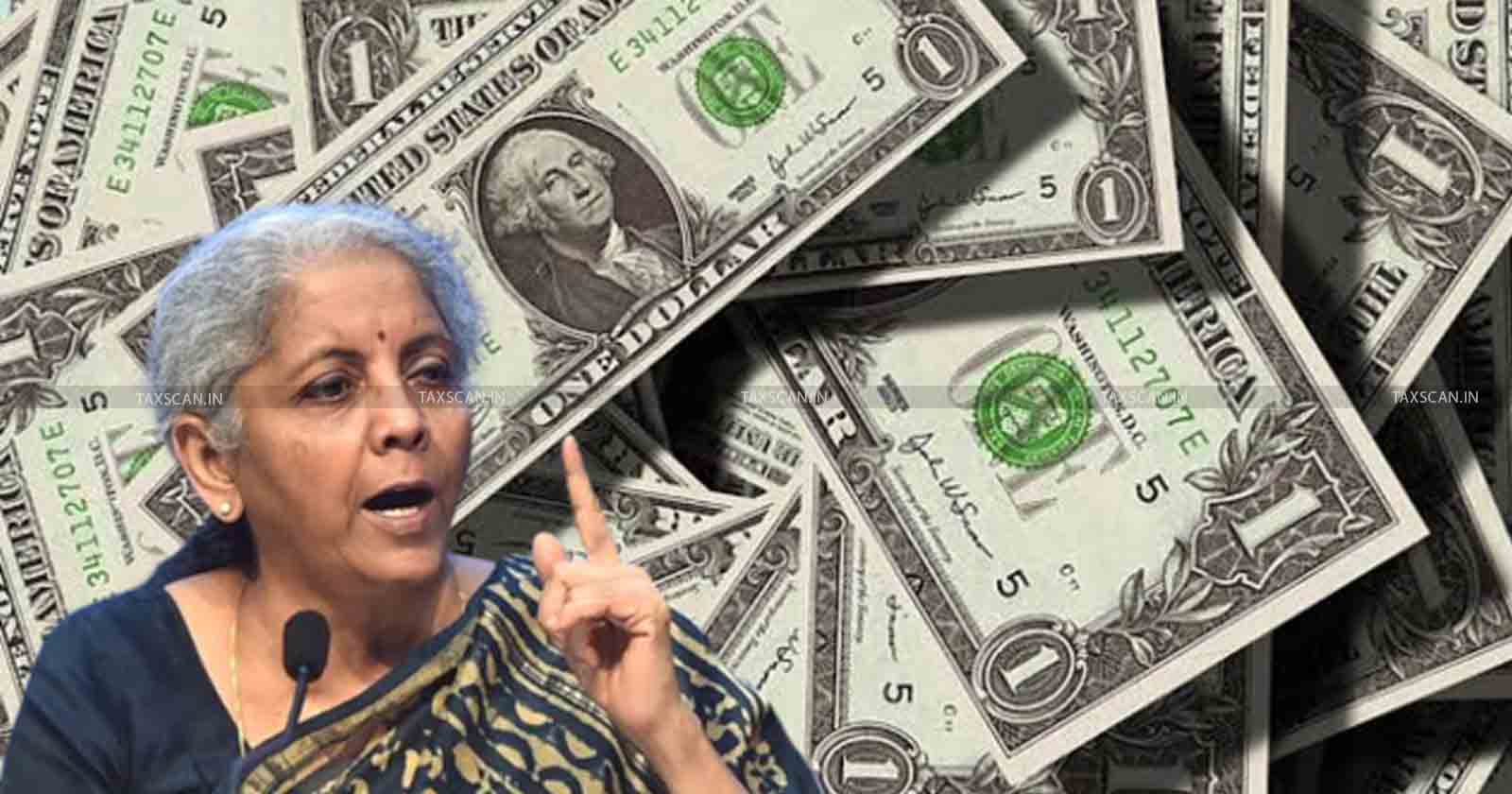Rupee Isn’t Falling, It’s the Dollar That’s Strengthening: Nirmala Sitharaman in Lok Sabha
In response to whether the government plans to revisit its exchange rate policy framework adopted in 2010, Sitharaman affirmed that the approach remains consistent. “The value of the INR is market-determined, with no target or specific level or band,” she reiterated.

Rupee – Falling – Dollar – Strengthening – Nirmala Sitharaman – Lok Sabha – TAXSCAN
Rupee – Falling – Dollar – Strengthening – Nirmala Sitharaman – Lok Sabha – TAXSCAN
Union Finance Minister Nirmala Sitharaman, responding to a question in the Lok Sabha, clarified that the Indian Rupee (INR) is not experiencing devaluation but is instead facing pressure due to the strengthening of the US Dollar (USD).
The question, raised by Indian National Congress MP Anto Antony from Pathanamthitta, sought details on the factors behind the rupee’s recent depreciation, its impact on inflation and the cost of living, and whether the government plans to revisit its exchange rate policy framework.
Know Practical Aspects of Tax Planning, Click Here
In her response, Sitharaman emphasized that the Indian Rupee operates under a market-determined exchange rate system, with no fixed target or band. She stated, “There has been no ‘devaluation’ of the Indian Rupee, which is a feature of a fixed-exchange rate regime.
The value of the INR is influenced by various domestic and global factors, including the movement of the Dollar Index, capital flows, interest rates, crude oil prices, and the current account deficit.”
The Finance Minister highlighted that the INR’s depreciation against the USD is part of a broader trend affecting Asian and global currencies. Since October 1, 2024, the US Dollar Index has risen by 6.5%, leading to significant depreciation in major Asian currencies.
During this period, the INR depreciated by 2.9%, the least among Asian currencies except for the Hong Kong Dollar. In comparison, the South Korean Won, Indonesian Rupiah, and Malaysian Ringgit depreciated by 8.1%, 6.4%, and 5.9%, respectively.
Know Practical Aspects of Tax Planning, Click Here
FM also pointed out that G-10 currencies, including the Japanese Yen, British Pound, and Euro, depreciated by more than 5.5% during the same period. She attributed the rupee’s pressure to narrowing interest rate differentials between the US and India, with the US 10-year yield rising by 75 basis points while India’s remained stable.
Additionally, foreign portfolio investment (FPI) outflows of USD 19.5 billion between October 1, 2024, and January 27, 2025, and a trade deficit of USD 31.8 billion in November 2024 further contributed to the rupee’s decline.
Addressing concerns about inflation and the cost of living, FM explained that currency depreciation can have mixed effects. While it enhances export competitiveness, it may also raise the prices of imported goods.
However, she clarified that the overall impact on domestic prices depends on various factors, including the pass-through of international commodity prices, demand and supply dynamics, and the availability of substitute goods. “The impact of exchange rate movement on inflation and consumer cost of living cannot be isolated,” she stated.
In response to whether the government plans to revisit its exchange rate policy framework adopted in 2010, Sitharaman affirmed that the approach remains consistent. “The value of the INR is market-determined, with no target or specific level or band,” she reiterated.
The Indian rupee’s recent decline comes amid global trade tensions, with the US Dollar strengthening due to the fear of a possible Trade war being pressed by US President Donald Trump.
After Mexico and Canada promised to strengthen border security, Trump postponed his tariff threats against them for 30 days on Monday.
The 30-share BSE Sensex closed 312.53 points, or 0.40 percent, lower at 78,271.28 on the domestic equities market, while the Nifty dropped 42.95 points, or 0.18 percent, to close at 23,696.30.
On February 5, 2025, the rupee closed at an all-time low of 87.46 against the USD, driven by risk aversion among investors. In the domestic equity market, the BSE Sensex fell by 0.40%, while the Nifty dropped by 0.18%. Despite these challenges, foreign institutional investors (FIIs) showed confidence in Indian markets, purchasing equities worth Rs 809.23 crore on a net basis on February 4, 2025.
Support our journalism by subscribing to Taxscan premium. Follow us on Telegram for quick updates


